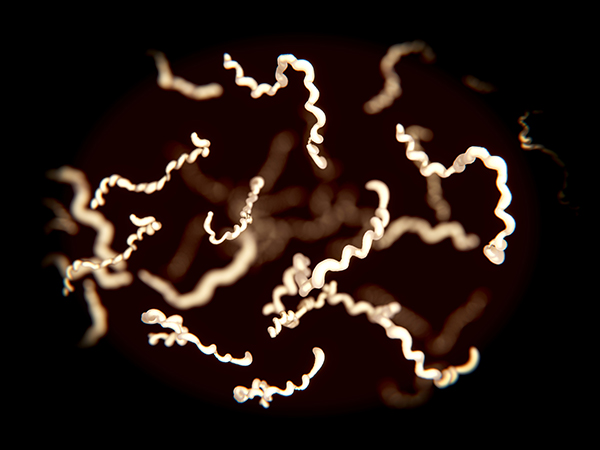
The disease is spread to humans through the bite of black-legged or deer ticks (Ixodes scapularis). Based on information released by the Centers for Disease Control and Prevention (CDC), Lyme disease is the most commonly reported vector-borne disease in the U.S, infecting an estimated 30,000 people each year.
Aside from Lyme disease, ticks carry and transmit a variety of other pathogens, some of which cause equally serious, if not altogether fatal, conditions. And as it turns out, these diseases, according to a study published by the American Society for Microbiology, are on the rise in the United States.
As published in the journal Microbiology Spectrum, not only is the number of tick-borne disease cases on the rise in the U.S., but so is the number of novel tick-related microorganisms and tick-borne disease agents identified in the past 20 years.
According to the researchers, this rise in numbers could be caused by the expansion in the range where various species of ticks live in North America, as well as the emergence of new, invasive tick species.
Among the recently identified tick-borne diseases are the following:
- Anaplasmosis is transmitted to humans by tick bites primarily from the black-legged tick in the northeastern and upper midwestern U.S. and the western black-legged tick (Ixodes pacificus) along the Pacific coast.
- Babesiosis is caused by microscopic parasites that infect red blood cells. According to experts, most human cases of babesiosis in the U.S. are caused by Babesia microti, which is transmitted by the black-legged tick and is found primarily in the northeast and upper midwest.
- Borrelia mayonii infection has recently been described as a cause of illness in the upper midwestern United States. It has been found in black-legged ticks in Minnesota and Wisconsin. B. mayonii is a new species and is the only species besides B. burgdorferi known to cause Lyme disease in North America.
- Borrelia miyamotoi infection has recently been described as a cause of illness in the United States. It is transmitted by the black-legged tick and has a range similar to that of Lyme disease.
- Bourbon virus infection has been identified in a limited number of patients in the Midwest and Southern United States. Experts say it is still unknown if the virus can be found in other areas of the United States.
- Heartland virus cases have been identified in the Midwestern and southern United States. According to studies, the Lone Star ticks can transmit the virus. However, it is unknown if the virus may be found in other areas of the United States.
- Powassan disease is transmitted by the black-legged tick and the groundhog tick (Ixodes cookei). The reported cases so far have been primarily from the northeastern states and the Great Lakes region.
- Rocky Mountain spotted fever (RMSF) is transmitted by different tick species, namely the American dog tick (Dermacentor variabilis), Rocky Mountain wood tick (D. andersoni), and the brown dog tick (Rhipicephalus sangunineus). Aside from the U.S., RMSF is also prevalent in Central and South America, where it is spread by the brown dog tick and other related tick species.
- Southern tick-associated rash illness or STARI is transmitted via bites from the lone star tick (Ambylomma americanum), which is found in the southeastern and eastern United States.
- Tickborne relapsing fever (TBRF) is transmitted to humans through the bite of infected soft ticks. According to experts, TBRF has been reported in 15 states: Arizona, California, Colorado, Idaho, Kansas, Montana, Nevada, New Mexico, Ohio, Oklahoma, Oregon, Texas, Utah, Washington, and Wyoming. The disease is associated with sleeping in rustic cabins and vacation homes.
- Tularemia is transmitted to humans by the dog tick, the wood tick, and the lone star tick. According to medical experts, tularemia is one of the most common of tick-borne diseases, as it occurs throughout the United States.
- 364D rickettsiosis (Rickettsia phillipi, proposed) is a new disease first reported in California. According to experts, this is transmitted to humans by the Pacific Coast tick (D. occidentalis).
With this in mind, it's best if you proactively avoid these tiny pests, especially since up to 50 percent of ticks are already infected with diseases that can potentially cause havoc in your immunity.
These immune system disruptions can even potentially make people even more vulnerable to diseases such as COVID-19, said Goudarz Molaei, director of the Connecticut Agricultural Experiment Station’s passive tick surveillance and testing program.
Here are some things you can do to avoid getting bitten by ticks:
- Do not go to tick-infested areas.
- Spray a solution of apple cider vinegar, neem oil and water on affected, tick-infested areas.
- Clean your surroundings and destroy possible tick environments by mowing your front yard and by taking out the trash. Ticks love living in dirty, dark places.
If you must venture out into the outdoors, make sure to take the necessary precautions and apply natural insect and pest repellents. An effective and natural tick repellent can be made by mixing these ingredients together:
- 9 drops citronella essential oil
- 6 drops tea tree essential oil
- 6 drops peppermint essential oil
- 1 tablespoon almond oil or jojoba oil
This mixture can be sprayed on the skin before heading out. If you want to make a bigger batch, just scale up the quantities needed.
For more stories on preventing tick-borne diseases, visit Health.news.
Sources include:
Please contact us for more information.























